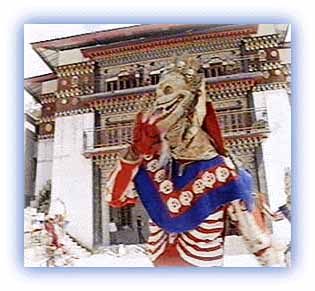Arunachal himalayas
General Info
· Kangto Massif
· Namcha Barwa Massif
Flora and fauna
Problems

![]()
| People of Arunachal The Arunachal has been inhabited by man from about 2000 B.C. The region is home to a large number of tribes of Indo-Tibetan- Burmese origin. There are twenty-two major tribes in the region. They have fiercely retained their traditional way of living and they have been helped in this by the restrictions imposed on Arunachal Pradesh which have to a large extent kept it isolated from the rest of the country. They have well- developed cultures. These tribes fiercely opposed the British during their annexation of Arunachal Pradesh with their highly effective jungle warfare tactics, which led to their being called the Daflas, or wild men. |
Arunachal Himalayas is virgin territory. (Download Realplayer) |
The primary religion in upper Arunachal Pradesh is Buddhism, owing to the Tibetan influence from the north. However, people still have faith in their traditional beliefs, animism and shemanism.
 |
| The Dancers of Death in Tawang Gompa Credit: Karamjeet Singh |
The spiritual center of the universe for the Monpas is the Tawang Galden Namgyal Lhatse. This is the divine site believed to have been chosen by the celestial white horse. According to the legend, the site of the Tawang monastery was shown to the Mira Lama in a dream. A white horse pawed the ground which was to be the site of the monastery. About forty years of construction work, starting from the 1640s, was needed to complete the structure. After three centuries of peace, this monastery was badly damaged by the Chinese invasion of 1962, with priceless murals and tankhas being destroyed. Reconstruction still goes on in parts of the monastery.
Another interesting feature is that the Tawang is still "alive" in today's world. Its library is a repository of thousands of block-printed commentaries and treatises on the subject of Mahayana Buddhism. This is a valuable resource for Buddhist scholars in the region. Even the paper used is produced by the Monpas locally, from the bark of the Hong Seng tree.
All rights reserved